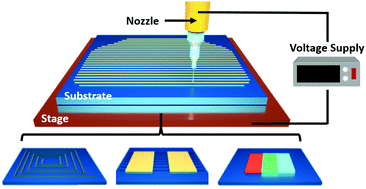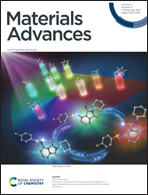Overview of recent progress in electrohydrodynamic jet printing in practical printed electronics: focus on the variety of printable materials for each component
Abstract
Printed electronics will be essential in the implementation of next-generation electronic devices, because printing facilitates fabrication of devices on various rigid, thin, or flexible substrates. Inkjet printing enables precise placement of fine droplets of different functional materials; moreover, it is inexpensive and adaptable for mass production. Electrohydrodynamic (EHD) jet printing, a type of inkjet technology, can generate very fine ink droplets by applying an electric field between the substrate and the nozzle; therefore, it is a promising candidate for high-resolution direct printing, which is essential in the manufacturing of various devices. More significantly, the characteristics of EHD jet printing can be conveniently adjusted by modulating the electric field strength, and various functional inks can be used in this process. This paper is a comprehensive review of recent progress in EHD jet printing technology to fabricate various electronic devices and circuits. Applications of various functional inks (electrode, semiconductor, dielectric materials) for each electronic component are also described.

- This article is part of the themed collection: Popular Advances


 Please wait while we load your content...
Please wait while we load your content...